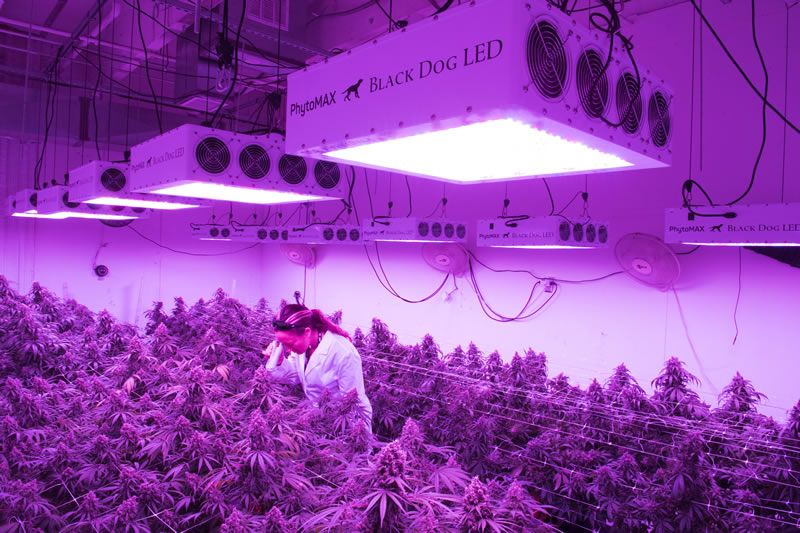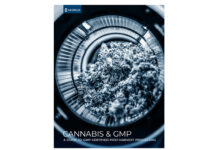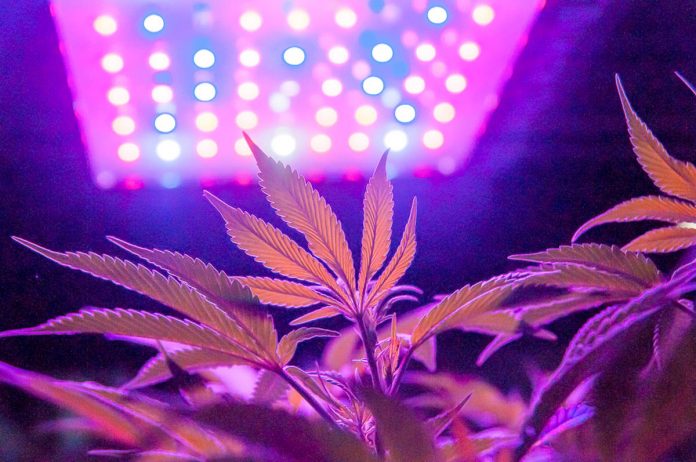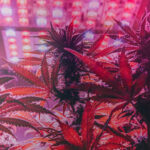Farmers starting hemp inside before transplanting to fields generally need to use artificial light. What they may not realize however is that transplantation success can be highly affected by the light spectrum they choose. Even greenhouse growers using lights to extend the photoperiod and prevent plants from initiating flowering at an inappropriate time will have dramatically better transplant success when the right supplemental light spectrum is used.
Seasoned growers who start plants indoors before transplanting outside are familiar with the “hardening-off” process of slowly adapting the plants from inside to the realities of living outdoors. Generally, this means providing the plants with shade to avoid sunburn, and shelter from the wind as the stems strengthen from their first exposure to gusty weather.
With the right light spectrum, plants grown indoors can eliminate the multi-day hardening-off process completely.
Eliminating sunburn
Sunburn is common on plants started indoors that are moved outside. This is common even when the plants were exposed to high light levels indoors, as the plants usually don’t get any exposure to ultraviolet (UV) light. Just as we develop sunburn quickly when we take un-acclimated skin on a tropical trip during the winter, plants un-acclimated to UV light will quickly burn when first exposed to full sunlight. Even plants grown in “full sunlight” in a greenhouse can have this issue, as plastic greenhouse coverings typically block 100 percent of the sun’s natural UV light. By using artificial light with the same amount of UV light the sun naturally provides, the plants can be prepared to handle natural levels of UV light without any shock or burning when moved outdoors.
UV light has another major benefit: Plants grow thicker cell walls when exposed to UV light. Thicker cell walls are more resistant to insects, bacteria, and fungal spores, meaning plants grown with a spectrum including UV light are more resistant to insects and disease both indoors and when they are first transplanted to the field.
High-Pressure Sodium (HPS) lights commonly used for agriculture have less than 1 percent of sunlight’s UV content, meaning plants started indoors and in most greenhouses under HPS light go into the outdoors unprepared for UV exposure. Metal Halide (MH) and Ceramic Metal Halide (CMH / LEC) and some fluorescent bulbs do provide some UV light, but they still cannot help with preparing the plants for wind exposure.
Preparing plants for wind exposure
By carefully adjusting the ratio of red to blue light, as well as red to far-red light, plants’ morphology can be manipulated to discourage stem elongation (stretching) and to grow smaller leaves. Long, lanky stems are more likely to be damaged in the transplanting procedure and by the wind after they are in the ground.
Large leaves act as sails catching the wind, increasing the likelihood of damage after transplantation, and dramatically increasing water loss in windy weather. A shorter, bushier plant with smaller leaves is much less likely to be damaged in the transplantation process and by wind once it is in the field. By exposing plants to the right ratios of light wavelengths while they are growing indoors, it is possible to have robust and healthy, but short and bushy plants with small leaves that do not require any hardening-off for wind before transplantation.
HPS lights’ spectrum actually increases stem elongation, making plants started under HPS particularly vulnerable to wind damage when transplanted outside. MH, CMH, and fluorescent lighting cannot fine-tune their spectrum to the right ratios to discourage stem elongation, and their spectral output typically increases leaf size. Only LED-based lights can have the level of spectral control to get the ratios right for growing short, bushy plants with small leaves. However, most LED grow lights simply use phosphor-converted “white” LEDs with the wrong wavelength ratios, or even worse, are actually designed to encourage stem and leaf growth because most consumers falsely perceive a taller plant with larger leaves to be “healthier.”

UV is the key
Even so-called tunable-spectrum LED grow lights usually can’t be “dialed in” to the ideal spectral ratios, and they often lack any significant UV light. The spectral tuning controls generally allow adjusting only two or three colors of LEDs, falling short of the precision needed to achieve the right ratio between UV, blue, red ,and far-red light. Every tunable-spectrum LED light also operates similarly: by dimming “channels” of LEDs, getting less light out of the fixture than you paid for or would expect, as spec sheets always show the light output when all channels are 100 percent on. As soon as any spectral adjustment is made, the light runs below 100 percent intensity.
With a carefully tuned LED spectrum ratio, it is possible to eliminate hardening-off plants before field transplantation. Besides saving time and work, starting a crop with robust, healthy plants can increase the overall crop yield. For those starting plants for sale to others, this also can significantly increase the per-plant value.
This allows for a solid return on investment and makes the cost of LED lights with UV and an ideal spectral ratio for keeping plants compact with small leaves a sound investment in your future.











